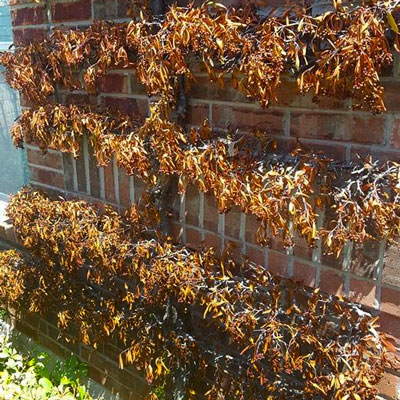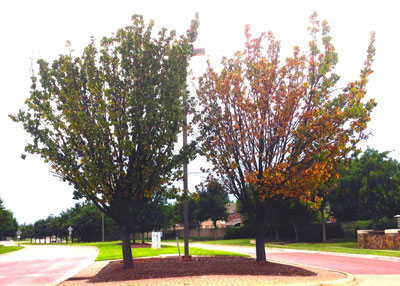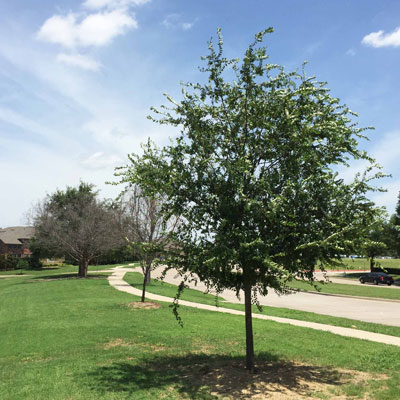Question of the Week – Number One: July 16, 2020
“What has hit my pyracantha espalier? It’s taken years to train it, and now it looks like it has died in just a couple of weeks.”

Cotton root rot, also known as Texas root rot, is a soil-borne fungal disease that is widespread across our state. Here are some of the things you’ll want to know about it.
Cotton root rot…
• Soil-borne fungal disease that is found primarily in alkaline soils (I-45 and westward, most notably near I-35 and westward).
• Scientific name of the fungus tells an important part of the story. Phymatotrichum omnivorum attacks more than 2,000 plant species. It is omnivorous. In plain English, it’s one of the most damaging diseases to the landscaping industry in Texas.
• It may lie dormant in the soil for many years, then suddenly kill a susceptible species in a manner of just a few days or weeks.
• Leaves hang on the plant as if the trunk had been cut and re-inserted back into the soil without roots.

• Prime candidates for the disease: apples, pears, cotoneasters, loquats, pyracanthas, lacebark elms, silver maples, cottonwoods, althaeas (roses-of-Sharon), mallows, forsythia, ligustrums and a whole host of others.
• Notable plants that are immune or resistant to cotton root rot: hollies, oaks, cedar elms, junipers, crape myrtles, nandinas, grasses of all types, liriope, ophiopogon.

• It has been suggested that applying a sulfur soil-acidifier to alkaline soil might help repress the cotton root rot fungus and protect vulnerable plants, but this has not always proven very successful. That’s especially the case where the soils are heavy clays. In those soils there is so much surface area that the action of the sulfur is highly repressed.
• It is best, when cotton root rot is known to be a problem, to plant resistant types of plants rather than trying to amend the soil. This is not a disease for which we have any reliable prevention or cure. And that is why you no longer see miles and miles of cotton along I-35 across Texas.
Here is information from the Texas Plant Disease Handbook.
And here is a long-standing TAMU list of plants resistant to cotton root rot. I note that it’s an eclectic list. For example, only one holly is listed and only one juniper in the shrub portion, although it can rightly be assumed that all of the others would be resistant as well. I hope this is useful. This is TAMU fact sheet L-2056.
